|
|
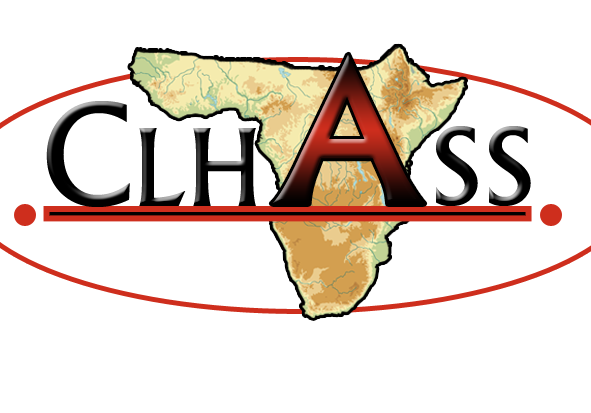 |
 |
Linguistic Contribution to the History of Sub-Saharan Africa
Responsable du Projet : Jean-Marie Hombert
Type de financement : ANR
2008 / 2012
|
|
This project contributed to the understanding of the history of Sub-Saharian languages.
|
|
|
 |
 |
A Culturally Informed Corpus of Dalabon: Descriptions of the Person as a Body and as Kin
Responsable du Projet : Maïa Ponsonnet
Type de financement : ELDP
2010 / 2011
|
|
Dalabon is a severely endangered Australian language of southwestern Arnhem Land, numbering about five masterspeakers. As part of a team effort to document Dalabon (S. Cutfield, Prof. N. Evans), this project will enlarge the Dalabon corpus, focusing on two interconnected, linguistically and culturally significant domains, of which a semantic analysis will be articulated as a PhD thesis. The first domain is body descriptions (body-parts and - functions), and the metaphors using these elements to represent emotional and intellectual aspects of the person. The second domain is kinship, also a culturally central domain connected to the notion of self.
|
|
|
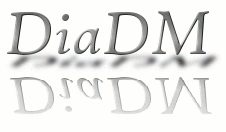 |
 |
Evolution Of Languages - Diachronic Data & Models
Responsable du Projet : Mahé Ben Ahmed
Type de financement : ANR JC
2007 / 2010
|
|
DiaDM is a web-based collaborative platform that aims to compile hypotheses about the processes of linguistic diversification and protolanguages from which today's languages are derived.
|
|
|
 |
 |
Documentation and Description of Nam Trik, an endangered language of the Colombian Andes
Responsable du Projet : Geny Gonzales Castaño
Type de financement : ELDP
2014 / 2015
|
|
Nam Trik (Barbacoan family) is a poorly described language of the Southwestern Colombian Andes spoken by about 8.000-9.000 people. The project will focus on two highly endangered dialects of Nam Trik, spoken in the communities of Totoró (76 speakers) and Ambaló (163 speakers). In collaboration with trained members of the community, a Nam Trik audio-video corpus will be collected. Part of this corpus will be used to produce a grammatical description and a bilingual multimedia dictionary. This study will also contribute to the typology of Barbacoan languages since Nam Trik does not have a grammar yet.
|
|
|
 |
 |
Documentation and description of Nasa Yuwe, the vernacular language of the Nasa people of the Colombian Andes
Responsable du Projet : Esteban Diaz Montenegro
Type de financement : ELDP
2014 / 2015
|
|
The Nasa Yuwe language (formerly Páez) is the vernacular language of the indigenous Nasa (aka Páez) people (ca. 150,000 ethnic members) in the Southwestern Andes of Colombia. Recent studies demonstrate the rapid decline of the intergenerational transmission and use of Nasa Yuwe in the youngest generations. The audio and video recordings to be collected in this project with the active participation of young community members will result in an important corpus of data susceptible to be used for the production of a description of the language and educational materials for the Nasa community.
|
|
|
 |
 |
Documentation and Description of Siriono, a highly endangered language of Bolivia
Responsable du Projet : Noé Gasparini
Type de financement : ELDP
2012 / 2018
|
|
This project aims at describing and documenting Siriono (Tupi-Guarani family), an underdescribed and endangered language of lowlands Bolivia. In a small area lived nearly thousand Siriono with less a dozen fluent speakers of Siriono and around forty occasional speakers. The language is threatened by the use of the national language, Spanish, despite the fact Siriono is either an official language. The Siriono community express a need for linguistic and pedagogical material to help Siriono's transmission to the next generations. This study will contribute to our understanding of how language convergence manifests in areas of intense language-contact.
|
|
|
 |
 |
Documentation of Bésiro, the endangered language of the Chiquitano people of Lowland Bolivia
Responsable du Projet : Pierric Sans
Type de financement : ELDP
2010 / 2013
|
|
This project aims at documenting and describing Bésiro (ISO-639: cax), an under-described language spoken by the Chiquitanos in the Bolivian low-lands (Lat: -16, 7; Long: -61, 4). The collection recordings and their description will help classifying this language, which was said to be an isolate, but is now strongly suspected to be part of the Macro-Jê family. In collaboration with trained members of the community, this project will archive data on the language, produce a comprehensive grammar, pedagogical material and a Spanish-Bésiro dictionary. The task is urgent, since Bésiro, surrounded by Spanish, has become definitively endangered (5,000 speakers for 100,000 ethnic members).
|
|
|
 |
 |
Documentation of Negidal, a nearly extinct Northern Tungusic language of the Lower Amur
Responsable du Projet : Brigitte Pakendorf & Natalia Aralova
Type de financement : ELDP
2016 / 2017
|
|
This project focuses on the documentation of Negidal, a highly moribund Northern Tungusic language spoken by at most a handful of individuals on the Amgun’ and Lower Amur rivers in the Russian Federation. The language comprises two dialects, Upper and Lower Negidal, of which the latter might already be extinct. The project will result primarily in an extensive corpus of interlinearized texts from the Upper dialect together with accompanying audio recordings. Should a search for remaining (semi-)speakers of the Lower dialect be successful, this corpus will be augmented with similarly interlinearized texts and accompanying recordings of Lower Negidal.
|
|
|
 |
 |
Documentation of Reyesano, an almost extinct language of Bolivia (South America)
Responsable du Projet : Antoine Guillaume
Type de financement : ELDP
2003 / 2005
|
|
The project is to undertake linguistic documentation of Reyesano, the most endangered and least known language of the Takana family from the Amazonian rainforests of northern Bolivia and eastern Peru. Takana languages are of tremendous interest for linguistics (similar to many Amazonian languages, they present many typologically unusual features) and also for the history of South American languages and populations.
|
|
|
 |
 |
Documentation of the Ese Ejja language of the Amazonian region of Bolivia
Responsable du Projet : Marine Vuillermet
Type de financement : ELDP
2006 / 2018
|
|
Documentation of the Ese Ejja language of the Amazonian region of Bolivia About 1200 Ese Ejjas live in the Amazonian region of Bolivia and Peru. Though declining fast, language vitality is still high in Portachuelo, their Bolivian nucleus where the documentation will be initiated, with permissions and invitations. Exploratory trips have helped identify potential consultants there and the community has expressed special interest in valorizing their indigenous skills (like fishing, hunting and weaving). Data from this trip will be used to sketch out the first grammar of the language, anticipating a future cross border and multidisciplinary documentation project of the Ese Ejja language at a later date.
|
|
|
 |
 |
Documentation of the Ye'kwana language in the Caura Basin
Responsable du Projet : Natalia Cáceres
Type de financement : ELDP
2008 / 2014
|
|
The Ye'kwana are a geographically extended group of about 6,000 people in the Amazonian region on the border between Venezuela and Brasil. Through still vital, the community is already being confronted by the feeling of losing parts of their cultural and linguistic traditions. The primary aim of this fieldwork is to collect more data and complete the understanding of the existing corpus collected in previous visits to the Ye'kwana community in the Caura basin in Venezuela. The current project will help develop a grammatical description as one of the first steps toward a larger interdisciplinary documentation project.
|
|
|
 |
 |
Documenting and describing Ecuadorian Siona
Responsable du Projet : Martine Bruil
Type de financement : ELDP
2013 / 2013
|
|
Ecuadorian Siona [snn] is a highly endangered language with less than 200 speakers left. It is spoken in six communities in the Cuyabeno reserve and on the banks of the Aguarico, the Eno and the Aguas Negras in Eastern Ecuador (latitute=0º0659’N, longitude=76º3989’W). Even within the underdocumented Western-Tucanoan branch of the Tucanoan family, there is little existing documentation on Siona. Therefore this dissertation project aims to fill this gap through documenting a corpus of various genres, to train Siona speakers to document their language themselves, and to develop a description of the language with a special focus on the evidential system.
within the underdocumented Western-Tucanoan branch of the Tucanoan family, there is little existing documentation on Siona. Therefore this dissertation project aims to fill this gap through documenting a corpus of various genres, to train Siona speakers to document their language themselves, and to develop a description of the language with a special focus on the evidential system.
|
|
|
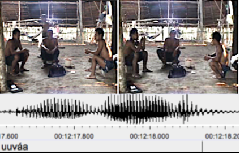 |
 |
Language Documentation Reference Corpus
Responsable du Projet : Frank Seifart & François Pellegrino
Type de financement : ANR
2019 / 2022
|
|
100 hours of audio-recorded text across 51 languages, 38 languages of which have time-aligned at the phone level, with translations morphological annotations.
|
EMBODIED PHONO
|
 |
Optimizing phonological learning in L2: a new role for the motor system
Responsable du Projet : Véronique Boulenger et Alice C. Roy
Type de financement : APPI LYON 2
2017 / 2018
|
|
In this project, we examine, using functional magnetic resonance imaging (fMRI), the involvement of sensorimotor cortical regions during the perception of non-native phonemes in healthy adults.
|
|
|
 |
 |
An ethnographically based linguistic documentation of Araona: a Takanan language of Bolivia
Responsable du Projet : Adam Tallman
Type de financement : ELDP
2018 / 2020
|
|
This project will produce a collection of transcribed, translated and analyzed narratives, conversations and other culturally relevant speech practices from the endangered Araona language of the Takanan family, spoken by approximately 120 to 150 people on the Manurimi and Manupari rivers in the department of la Paz, Bolivia. These materials will serve as the basis for a grammatical description of the language and a linguistically based ethnography of the Araona people. Such a project is urgent because there are currently few documentary materials (either linguistic or cultural) available on the Araona, while they face pressure to adapt to the outside because of rapid economic growth in the national economy.
|
MOBILO
|
 |
MOBILO: Modelling of bilingual trajectories: new statistical
approaches to linguistics applied to bilingual development
Responsable du Projet : Anna Ghimenton
Type de financement : APPI LYON 2
2020 /
|
|
|
|
|
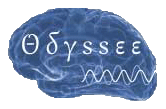 |
 |
ODYSSEE
Responsable du Projet : Véronique Boulenger
Type de financement : ANR JC
2012 / 2014
|
|
This project aimed at identifying, using magnetoencephalography (MEG), the dynamics of brain rhythms underlying speech naturally produced at a normal or fast rate.
|
|
|
 |
 |
A preliminary documentation of Bolivian Guaraní
Responsable du Projet : Windy Daviet
Type de financement : ELDP
2015 / 2016
|
|
Bolivian Guaraní is a Tupi-Guaraní language spoken in the South East of Bolivia. This language is spoken by around 40.000 speakers, but it is threatened, because younger speakers are switching to Spanish. This collaborative project with the community has three aims: first, a preliminary documentation of Bolivian Guaraní, consisting of an open-access archive of a 4-hour audio and video database including traditional stories; second, a thematic glossary of terms for tools (agricultural, hunting and building tools), for the use of the community; and third, a Master thesis consisting of a sociolinguistic report and a revision of the phonological analysis.
|
|
|
 |
 |
A preliminary linguistic survey of Yucuna, an endangered language of Colombia
Responsable du Projet : Magdalena Lemus Serrano
Type de financement : ELDP
2015 / 2016
|
|
This project aims at documenting Yucuna (ISO 639-3: ycn), a definitely endangered North Amazonian Arawakan language spoken in Colombia by approximately 1.800 persons. A corpus of transcribed audio recordings will be produced with the help of community members living around the Miriti-Parana River. This study will constitute the basis for a more comprehensive project whose ultimate aim is to produce a grammatical description as well as a literacy handbook to be used in a community-owned education program.
|
|
|
 |
Prems
Responsable du Projet : Sophie Kern
Type de financement : ANR
2012 / 2015
|
|
Prems considers simultaneously the influence of articulatory constraints and input characteristics on lexical order of acquisition in toddlers acquiring different languages.
|
|
|
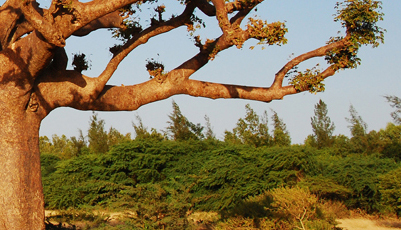 |
 |
Description, Typology and Documentation of Languages of Senegal
Responsable du Projet : Sylvie Voisin pour DDL
Type de financement : ANR
2009 / 2014
|
|
Collaboration for the documentation and description of languages from Senegal, and the classification of languages in the Atlantic group.
|
|
|
 |
Speech in Noise
Responsable du Projet : Fanny Meunier
Type de financement : ERC Starting Grant
2008 / 2013
|
|
The project aimed at studying the cognitive processes underlying comprehension of speech in cocktail party situations, in normal-hearing and dyslexic participants.
|
|
|
 |
 |
The documentation of Rama: a very endangered language of Nicaragua
Responsable du Projet : Colette Grinevald
Type de financement : ELDP
2004 / 2014
|
|
Production of a dictionary, a digitized collection of taped texts, videotaped samples of language use, and a DVD documentary for class use. The main focus will be a trilingual Rama – English – Spanish dictionary incorporating linguistic and cultural information as well as visual, audio and video illustrations, produced as a paper publication and as a database to be potentially expanded and used for the production of pedagogical material by interested parties.
|
The evolved and social functions of human nonverbal vocalisations: a cross-cultural investigation
|
 |
The evolved and social functions of human nonverbal vocalisations: a cross-cultural investigation
Responsable du Projet : Katarzyna Pisanski
Type de financement : 80 prime CNRS
2022 / 2024
|
|
|
|
|
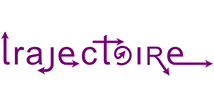 |
 |
Trajectoire
Responsable du Projet : Colette Grinevald, Anetta Kopecka, Alice Vittrant, et Jean-Michel Fortis (HTL)
Type de financement : CNRS
2008 / 2011
|
|
Study the linguistic expression of Trajectory based on a typology of the strategies found in a sample of languages across the world.
|

